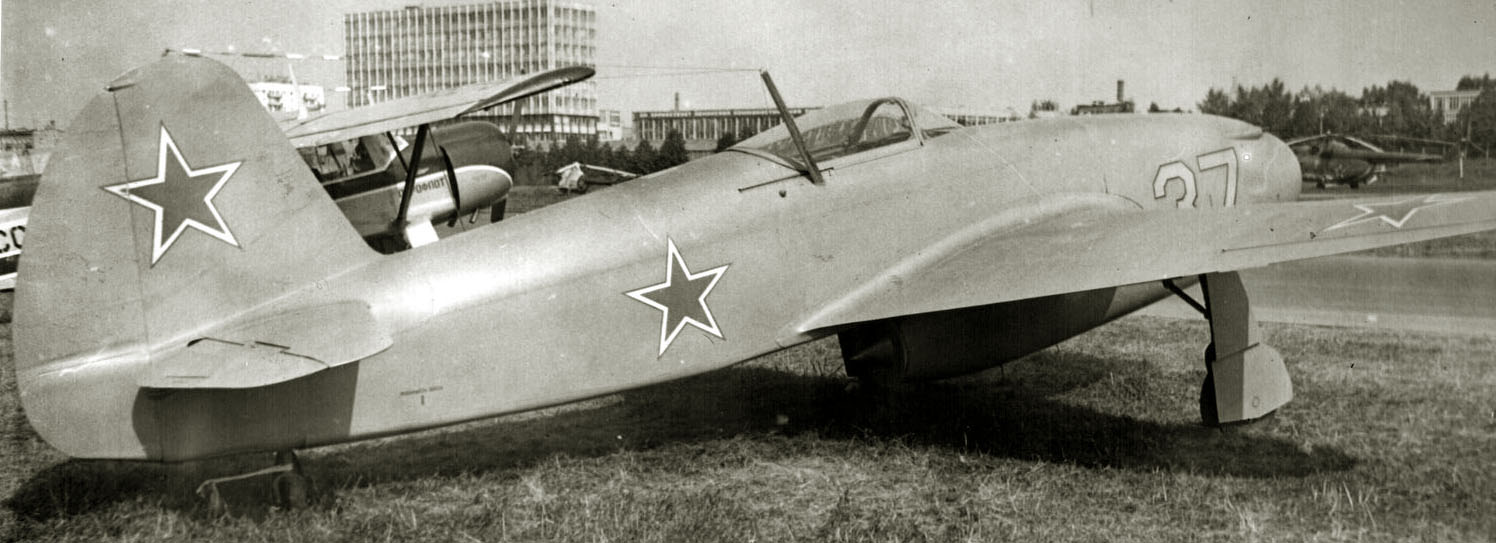
Aviation of World War II


 |
Aviation of World War II |


|
|
Soviet Union | Lend - Lease | Facts | Forum | Germany | Japan | R A F | U S A A F | Other | Photos |
|
|
Yak-15Turbojet FighterYakovlev
In the spring of 1947, the Air Force received more than fifty Yak-15s, some of which either had no weapons at all, or were equipped with only one gun. Their mass demonstration took place on May 1 over Red Square, when 100 jet aircraft (50 Yak-15s and MiG-9s) flew in formations. In the same year, aerobatics on jet aircraft was demonstrated for the first time at the air parade in Tushino. On the Yak-15, Lieutenant Colonel I. Polunin was the first to speak, and behind him a whole cascade of figures was demonstrated by the link of the Hero of the Soviet Union, Lieutenant Colonel N.I. Khramova. In 1948, Yu.A. mastered aerobatics on various jet aircraft. Antipov, A.G. Proshakov and other Air Force pilots. On Aviation Day, twice Hero of the Soviet Union, General E.Ya. Savitsky organized an aerobatic team on the Yak-15, which he led himself, including famous pilots: P. Sereda, N. Khramov, V. Efremov and P. Solovyov. The following year, group aerobatics on the Yak-15 was demonstrated by another five, led by the Hero of the Soviet Union, Lieutenant Colonel P. Chupikov. According to the Yakovlev company, serial production of the Yak-15 was completed in 1947 and amounted to 280 vehicles. Considering the results of the State Tests, it is quite logical to assume that the indicated number indicates the number of fighters put into production under the designation Yak-15, some of which, perhaps a large one, were transferred to the military after being converted into more advanced aircraft of this family. By the way, there are cases when single-seat vehicles were finalized into "sparks" directly in combat regiments. However, the significance of the Yak-15 in the history of Soviet aviation cannot be underestimated. Hundreds of pilots were trained on machines of this type, it was the Yak-15 that became the first Soviet jet aircraft officially adopted by the Air Force, as well as the first jet fighter on which military pilots mastered aerobatics. For obvious reasons, the Yak-15 had a number of characteristic flaws. Among the most common defects in operation were: leakage of hydraulic fluid through the sealing cuffs of the suspension struts of the chassis, breakage of individual threads of the rudder control cables, and destruction of the tail wheel springs, most likely caused by overheating. But the main drawback of the Yak-15 was still too short a flight range. With a full refueling of 590 kg, it reached only 510 km, while the Yak-3, with a fuel supply of 350 kg, could overcome 1060 km. This problem manifested itself most acutely in preparation for the military parade on May 1, 1947, in which 50 Yak-15s took part. After collecting all the "parade crew" in the air, only half an hour of fuel remained, therefore, in order to reduce the flight time, it was necessary to organize the take-off of aircraft in large groups and at minimum intervals, and also to choose the route very carefully. It is hardly possible to talk about some kind of combat use of the Yak-15. However, in the Western press there was information that on May 10, 1953 in Korea, the crew of Mr. D. Philips from the 319th Aviation Squadron shot down an aircraft of this type. But this simply could not be, because the Yak-15 was not sent to Korea. One of the serial Yak-15s was used in the FRI as a flying laboratory during the development of a wing-mounted air refueling complex proposed by test pilots I. Shelest and V. Vasyatin. The fighter was equipped with a dummy fuel receiver and in 1948 was involved in flight experiments in which the Tu-2 played the role of a tanker. Only one copy of the Yak-15 has survived, but it is in excellent condition! It is stored in the museum of OKB named after A.S. Yakovlev. The aircraft was put on public display twice: in Tushino in August 1977 and at Khodynka in August 1989. |
|
|